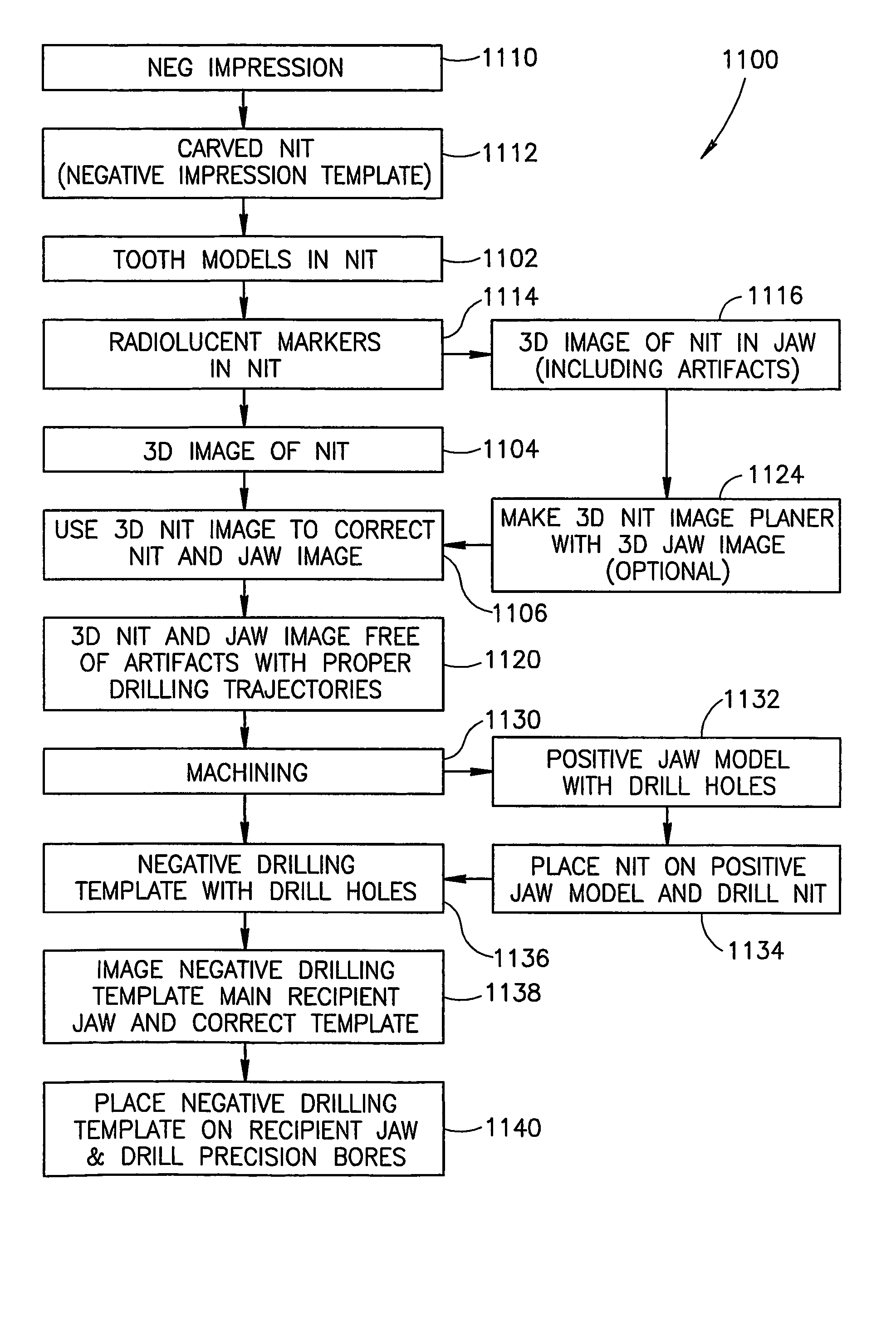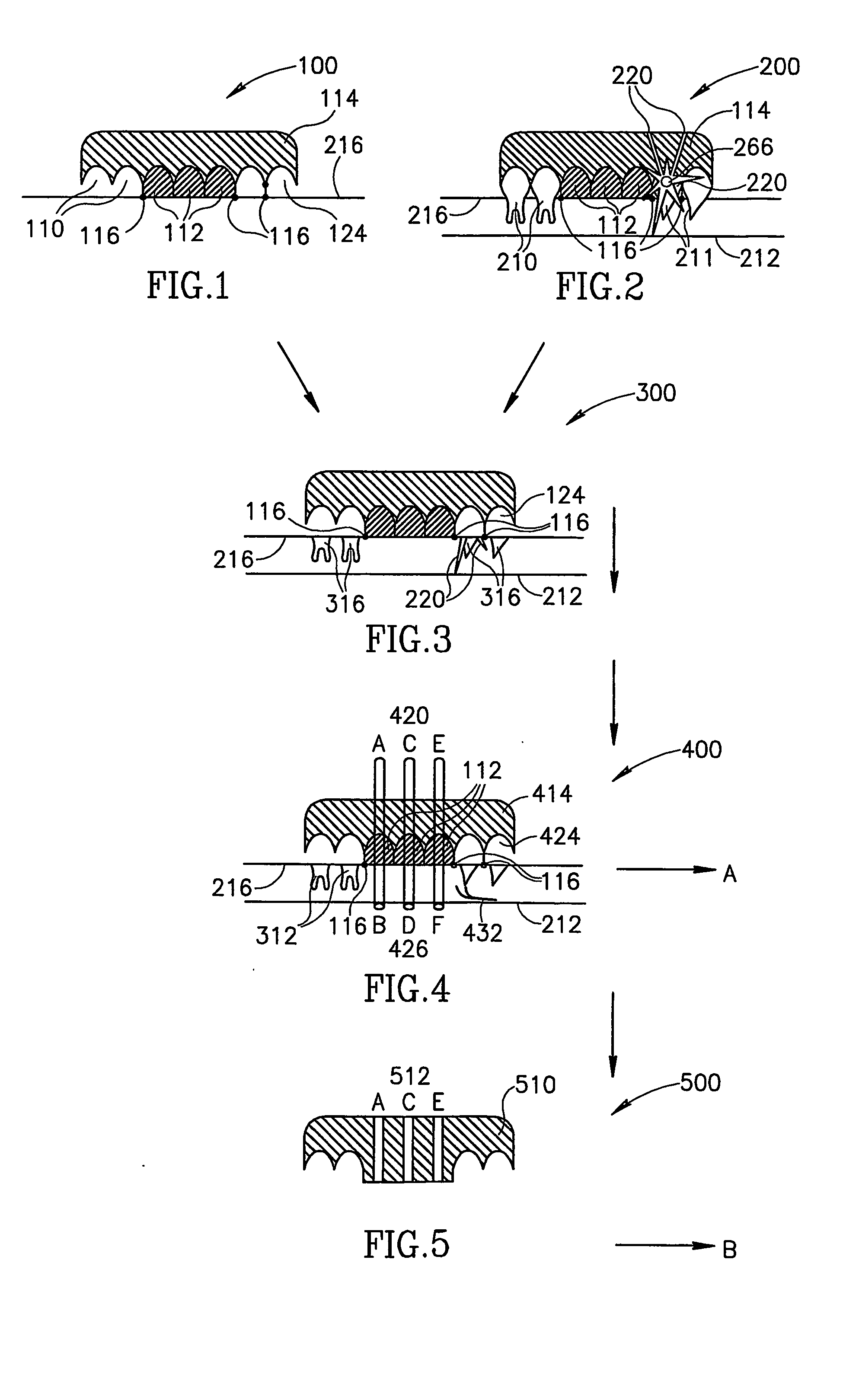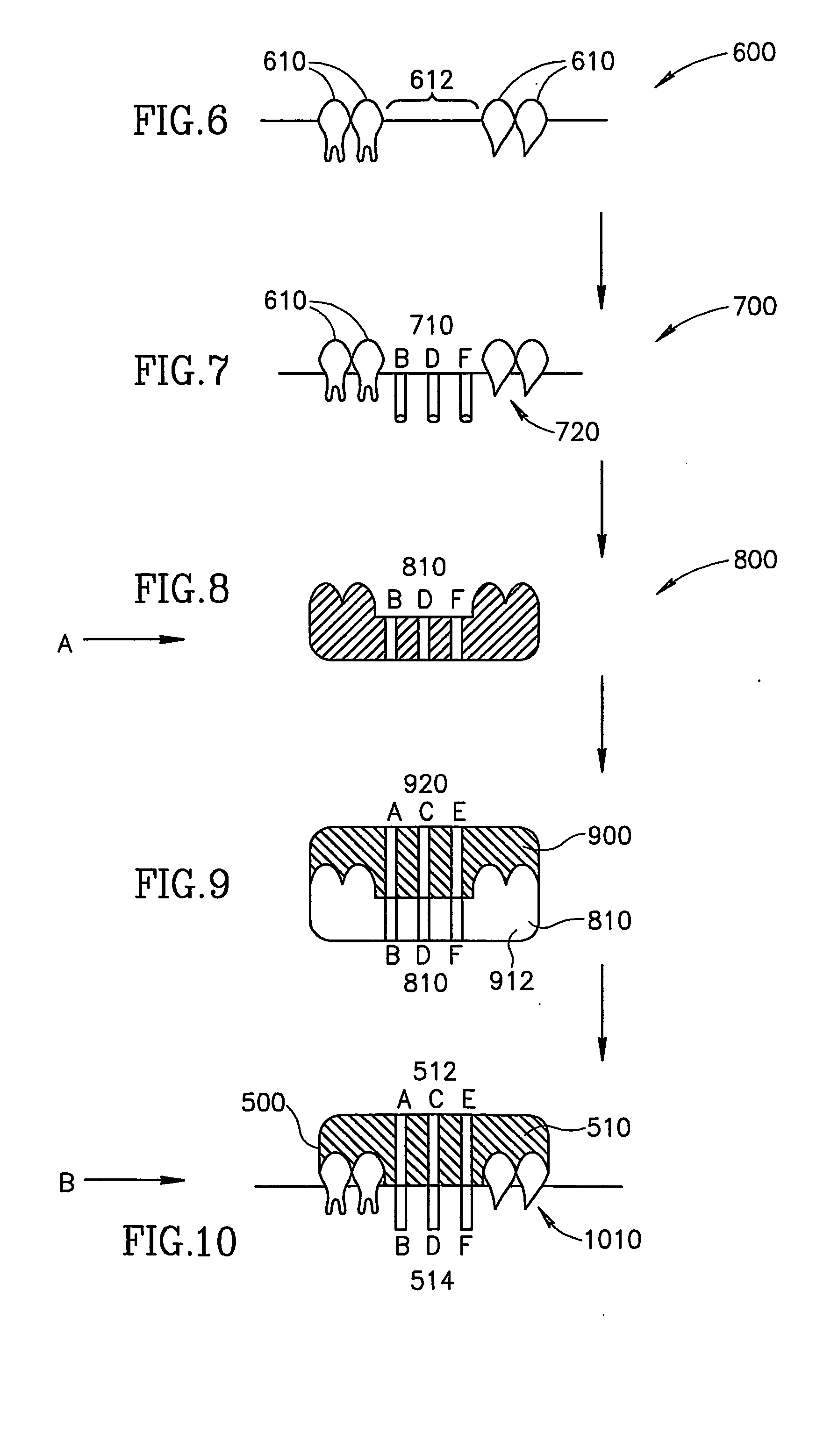Oral implant template
a template and implant technology, applied in the field of oral implant drilling template, can solve the problems of undesirable use of cnc machine, inability to align the drilling guide according to this estimated jaw model, and prior art image correction software, etc., and achieve the effect of convenient manipulation
- Summary
- Abstract
- Description
- Claims
- Application Information
AI Technical Summary
Benefits of technology
Problems solved by technology
Method used
Image
Examples
Embodiment Construction
[0056] An aspect of the present invention relates to producing an artifact-corrected image of a recipient jaw and its negative impression as a basis for creating a drilling template with properly aligned drill guides for drilling implant-receiving bores in a recipient jaw. To understand this process, reference will be made to a flow chart 1100 in FIG. 11, interspersed with references to FIGS. 1 through 4.
[0057] In flow chart 1100 of FIG. 11, at 1110, a negative impression is made of the recipient jaw. Optionally, the negative impression at 1110 is prepared using a three-step mechanical impression method known in the art. First, a negative replica is taken directly from the patient teeth by conventional methods, for example using elastic viscose. The negative replica is filled with a hard material, for example gypsum (plaster) to form a replica of the implant area. A third (negative) impression is taken of the replica of the implant area. While a negative impression is made in three...
PUM
 Login to View More
Login to View More Abstract
Description
Claims
Application Information
 Login to View More
Login to View More - R&D
- Intellectual Property
- Life Sciences
- Materials
- Tech Scout
- Unparalleled Data Quality
- Higher Quality Content
- 60% Fewer Hallucinations
Browse by: Latest US Patents, China's latest patents, Technical Efficacy Thesaurus, Application Domain, Technology Topic, Popular Technical Reports.
© 2025 PatSnap. All rights reserved.Legal|Privacy policy|Modern Slavery Act Transparency Statement|Sitemap|About US| Contact US: help@patsnap.com



